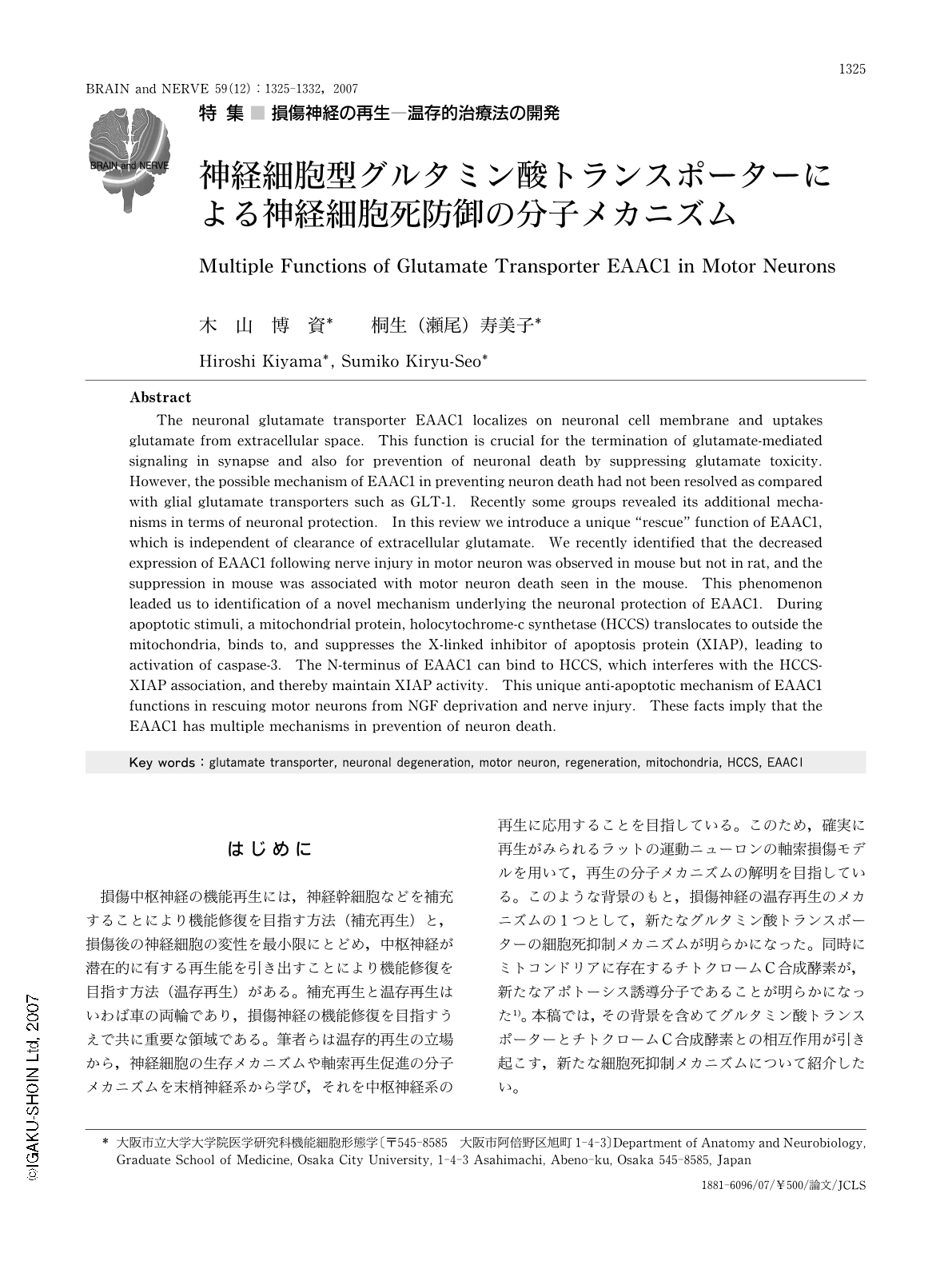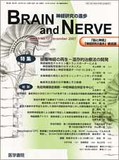Japanese
English
- 有料閲覧
- Abstract 文献概要
- 1ページ目 Look Inside
- 参考文献 Reference
はじめに
損傷中枢神経の機能再生には,神経幹細胞などを補充することにより機能修復を目指す方法(補充再生)と,損傷後の神経細胞の変性を最小限にとどめ,中枢神経が潜在的に有する再生能を引き出すことにより機能修復を目指す方法(温存再生)がある。補充再生と温存再生はいわば車の両輪であり,損傷神経の機能修復を目指すうえで共に重要な領域である。筆者らは温存的再生の立場から,神経細胞の生存メカニズムや軸索再生促進の分子メカニズムを末梢神経系から学び,それを中枢神経系の再生に応用することを目指している。このため,確実に再生がみられるラットの運動ニューロンの軸索損傷モデルを用いて,再生の分子メカニズムの解明を目指している。このような背景のもと,損傷神経の温存再生のメカニズムの1つとして,新たなグルタミン酸トランスポーターの細胞死抑制メカニズムが明らかになった。同時にミトコンドリアに存在するチトクロームC合成酵素が,新たなアポトーシス誘導分子であることが明らかになった1)。本稿では,その背景を含めてグルタミン酸トランスポーターとチトクロームC合成酵素との相互作用が引き起こす,新たな細胞死抑制メカニズムについて紹介したい。
Abstract
The neuronal glutamate transporter EAAC1 localizes on neuronal cell membrane and uptakes glutamate from extracellular space. This function is crucial for the termination of glutamate-mediated signaling in synapse and also for prevention of neuronal death by suppressing glutamate toxicity. However, the possible mechanism of EAAC1 in preventing neuron death had not been resolved as compared with glial glutamate transporters such as GLT-1. Recently some groups revealed its additional mechanisms in terms of neuronal protection. In this review we introduce a unique "rescue" function of EAAC1, which is independent of clearance of extracellular glutamate. We recently identified that the decreased expression of EAAC1 following nerve injury in motor neuron was observed in mouse but not in rat, and the suppression in mouse was associated with motor neuron death seen in the mouse. This phenomenon leaded us to identification of a novel mechanism underlying the neuronal protection of EAAC1. During apoptotic stimuli, a mitochondrial protein, holocytochrome-c synthetase (HCCS) translocates to outside the mitochondria, binds to, and suppresses the X-linked inhibitor of apoptosis protein (XIAP), leading to activation of caspase-3. The N-terminus of EAAC1 can bind to HCCS, which interferes with the HCCS-XIAP association, and thereby maintain XIAP activity. This unique anti-apoptotic mechanism of EAAC1 functions in rescuing motor neurons from NGF deprivation and nerve injury. These facts imply that the EAAC1 has multiple mechanisms in prevention of neuron death.

Copyright © 2007, Igaku-Shoin Ltd. All rights reserved.


